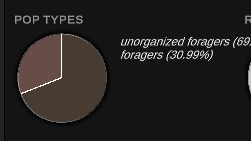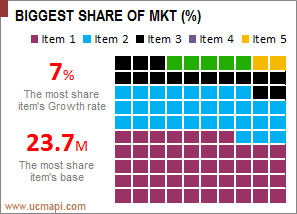On Windows, Gleba saves map exports to:
AppData\Roaming\Godot\app_userdata\gleba\user_data\cache<br><br>
You can also find it via:
%APPDATA%\godot\app_userdata\gleba\user_data\cache
Sorry for the confusion, it's nothing that complicated ^-^
In this context, world topology is just the shape of the graph of tiles and their neighborhoods.
Basically, my algorithms work more or less the same regardless of whether tiles are hexagons with 6 neighbors each, squares with 4 neighbors, squares with 8 neighbors, an irregular voronoi graph, or something even more exotic.
Hi!
I started this project a year or so ago, but the vast majority of it was in various experiments and what I would call "engine work". Not going into technical details but this project is doing a lot of weird things that afaik not many other games do (like having most algorithms be world topology agnostic so that things like tile shape and neighborhoods can be easily swapped and compare with each other).
When it comes to "simulation" coding, I spent around a month and a half on it, after which I spent a month and a half working on 3d rendering. first person control, game physics, and UI.
The current goal is to get more feedback on world generation algorithms and incorporate it while I work on combat and spawning animals in the 3d world. In an ideal world there'll be a tiny open world rpg tech demo by the end of the year and after that I'll be working on procedural generation of societies, settlements, and dialogue.
Most of it has been open source for over a year: https://github.com/Calandiel/SongsOfFOSS
The parts that aren't are in the process of being ported to an open source license.
I think there's some misconception here. SotE 's funding ran out but the game is still under development by the community. We open sourced it under the GPL license ( https://github.com/Calandiel/SongsOfGPL )
It takes 1-3 minutes to generate a planet with your high performance computer precisely because the planet generation system isn't bad (in the sense of accuracy). SotE runs a tectonic simulation, calculates fluxes of magma heat, runs multiple climate simulations at different timescales, runs erosion simulations, figures out watersheds and lake placements by running a physical simulation of water movement and drainage, generates soils using a physically based bedrock erosion model while also coupling it to the water movement simulation, generates glaciers along with their movements, runs a plant growth simulation and so on.
And that's just a short summary, each of these steps is much more detailed than just doing the simplest thing possible (to give an example, if you pay close attention to oceanic plates youll see that as they get older they get denser, leading to deeper oceans on average at one edge of the plate)
Calculating all of that is a *ton* of work and that's why world gen takes a long time. 1-3 minutes sounds about right. On my laptop it used to take 5-7 minutes to run full world generation.
As for the game, assuming you're talking about the version from itchio, there isn't any. At that point in development it was only a world generator.
Source for all of the above: I coded around half of SotE if measured by lines of code.
What do you find "bad" about SotE? To my information it's the most accurate planet simulation you can run on a consumer device, provided you have 8 GB of RAM (which is more than normal, it was benchmarked against median computers as per Steams hardware survey: https://store.steampowered.com/hwsurvey )
Hello! ^^
I'm not sure what would be the best way to reach out as I don't use Twitter so I'll try my luck here.
I want to ask, do you take commissions? I've noticed you have a Patreon account but I'd be interested in having a bunch of old school textures made. I've been using your texture packs for prototyping and I've come to like them so much I'd actually prefer using them for the final product. Only problem being, they don't cover everything I'd need.
If you do take commissions, do you perhaps have an email address for business related queries? I'd like to know the rate and discuss some other details. For example, I would prefer if any textures I'd potentially ask for were made publicly available like your other texture packs. Not sure if that'd work with you.
Best regards,
Calandiel
It's a false positive. You'd need to add the launcher to a list of exceptions.
The launcher is open source if you'd like to read what it's doing before adding it as an exception: https://github.com/Calandiel/sote_launcher/blob/main/loader.c
Could you provide more information? What version of the game is it exactly? When does the error happen? Right after double clicking the exe? Does it render the launcher or the main menu at all? What's your operating system? Have you tried running it again to see if it's a persistent issue? Most versions of SotE (including the latest 0.2) have two executables in their zip file. You have to use the one with Launcher in name. Additionally, on some systems, it may ask for administrative privileges, on others it may require them but fail to ask.
I'm not sure how that'd work.
I looked at geojson on wikipedia:
https://en.wikipedia.org/wiki/GeoJSON
and it seems to be a data format for storing lines, polygons and points on a globe.
What exactly are you expecting from such feature?
I'll keep this short because the subject isn't that complex either.
At the moment, we're using pie charts for data visualization, like so:

However, we could instead use waffles, like this chart:

or this one:

They have less dead space but they may be more difficult to read and only show percentages rounded to the nearest integer. They also have a bit different aesthetic.
Which one would you prefer? Or perhaps there is some yet different graph you'd suggest for the main data visualization tool (with exception of treemapping, it's a bit too slow to use all over the place)?
Sorry for a late reply. Corona got in the way of development and we haven't been paying enough attention to our media.
To answer your question, here is the list of currently planned (playable) races:
https://sote.miraheze.org/wiki/Races
In general, we won't be limiting you to "civilized" peoples only. You will be able to play as (organized) tribes of hunter gatherers or nomads.
As a word of clarification.
The article you linked is actually also the one on which our currently preferred economic model is based (in a modified form to allow good quality to be taken into account).
However, keeping a market on each tile is impossible due to RAM constraints. I mentioned cities/settlements in my post above for a reason. We can have about 20k entities storing pops per million tiles. These cities then have territories from which they can extract resources (through farming, mining, fishing, woodcutting, foraging, hunting and other means). Rural population is stored on a separate list on those entities.
I'm under impression some people see tiles as our equivalent of provinces from Paradox' games. They're not. Settlements are. Tiles act as dynamic pixels to define environment for settlements so that things like available resources and farming rates can be determined.
Demian and I were rediscussing the best approach to territories. As some of you may know, we want borders to be more fluid than those in most strategy games (especially at the beginning of the game). As such, we talked about dynamic provinces that can grow and shrink. There are, however, multiple ways to implement them that we are considering. We'd like to hear your thoughts on the subject (and possibly your own ideas as to how the system should be approached).
To introduce both models, we'll need some shared assumptions. The map is divided into tiles (hexes). Those hexes are then aggregated into territories. Each territory contains at most a single settlement (you can think of settlements as cities in Civilization. They're the main hub of population in any given territory). Settlements can then exert control over other territories forming more complex structures. Here, we'll call these structures "provinces". These aggregations will be dynamic in either model.
Our two models are what I'll call a "dynamic" and a "static" model. In the latter, territories are predefined, like they are in, say, Endless Legends or Humankind. Whereas in the "dynamic" model territories would gain and drop tiles depending on the hold they have on them.
Now, before you immediately say "Well, that's easy, I want more dynamic stuff!", the choice isn't as simple as that. Static regions have a lot more going for them than may meet the eye.
In no particular order, they simplify pathfinding a lot, allowing for much more efficient path caching and direct usage of algorithms superior to A* (such as HPA*). They would also allow us to store animal pops directly on them, removing the need to recalculate accessible animal populations for each territory with each monthly tick.
They also prevent issues with possibly excessive border gore in situations where a decaying coastal settlement could get squished into a thin line by two neighboring coastal settlements. There are some countermeasures we could take against that but they generally increase code complexity (which is *not* a good thing in an already complex simulation).
And, lastly, they're much easier to implement and maintain. Though, that's a bit less of a consideration (but it may open using them to bootstrap the simulation with the goal of replacing them by a dynamic model later on).
I think their issues are much easier to spot(rigidity, lack of adaptation to evolving terrain so they'd need to be based on terrain profile more than biomes, etc). If you can think of other issues or advantages (for either model), or a different model entirely, let us know. Otherwise, share your thoughts on the subject below.